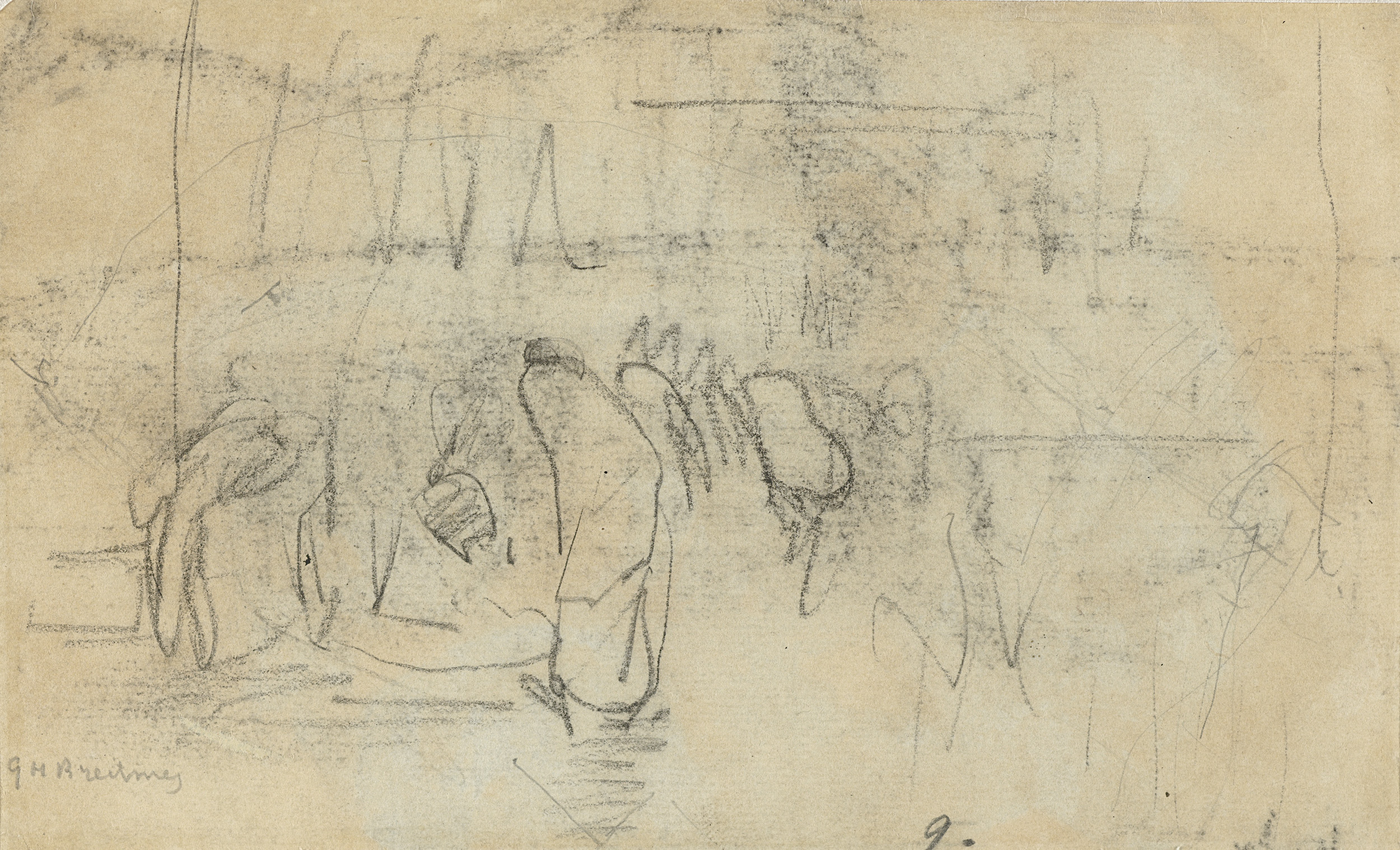Product Focus: The Yellow Riders Pocket Square
This week in our product focus series, we delve deeper into our beautiful The Yellow Riders Silk Pocket Square, painted by Dutch Impressionist George Hendrik Breitner.
EXPLORE FURTHER: THE YELLOW RIDERS POCKET SQUARE
THE STORY BEHIND THE PAINTING
The Yellow Riders, quite literally refers to the colour of the soldiers’ uniform. Breitner, strongly influenced by contemporary French painting, shared their preference for working ‘en plein air’, or to depict the outdoors. To obtain a more lively effect in his work, he also worked of of photographs and sketches.
Within the painting, The Yellow Riders, an elite unit of the Royal Netherlands Army, are depicted galloping down the Dutch dunes kicking up dust with their speed. By choosing to focus on the black and red tones in the riders' busbies, and then throughout the composition, Brietner reinforces the dynamism of the movement.

All that can be seen in the dust cloud are accents of the black, red and yellow tones. This is one of several iterations of the same subject that Brietner completed in his lifetime.
Today, the Rijksmuseum in Amsterdam owns a drawing by Breitner that depicts nearly the same formation of horses as we can see in this painting.
Did You Know? In 1880 and part of his early studies, Breitner was expelled from the Art Academy of The Hague for misconduct, when he destroyed the regulations-board.
ABOUT THE ARTIST
George Hendrik Breitner was a Dutch painter and photographer. An important figure in Amsterdam Impressionism, he is noted especially for his paintings of street scenes and harbours. He painted 'en plein air', and became interested in photography as a means of documenting street life and atmospheric effects, such as rainy weather, as reference materials for his paintings.
 Artist Photograph (Source: Wikipedia)
Artist Photograph (Source: Wikipedia)
George Hendrik Breitner was born in Rotterdam, Netherlands. From 1876 to 1880 he attended the Art Academy in The Hague where his extraordinary talent was rewarded on various occasions. In 1882 he met and worked together with Vincent van Gogh, with whom he often went sketching in the poorer areas of The Hague. Due to his personal interests, Breitner preferred working-class models: labourers, servant girls and people from the lower class districts.
This preference of the lower class saw him claimed as 'the people's painter'. He was the painter of city views par excellence: wooden foundation piles by the harbour, demolition work and construction sites in the old centre, horse trams on the Dam, or canals in the rain. With his nervous brush strokes, he captured the dynamic street life. By 1890, cameras were now affordable, and Breitner became very interested in capturing movement and illumination in the city, becoming a master in doing this.
 Early sketches of the people of Amsterdam (Source: Wikipedia)
Early sketches of the people of Amsterdam (Source: Wikipedia)
Breitner also painted female nudes, but just like Rembrandt he was criticized because his nudes were painted too realistically and did not resemble the common ideal of beauty. In his own time Breitner's paintings were admired by artists and art lovers, but often despised by the Dutch art critics for their raw and realistic nature.
By the turn of the century Breitner was a famous painter in the Netherlands, as demonstrated by a highly successful retrospective exhibition at Arti et Amicitiae in Amsterdam. Breitner travelled frequently in the last decades of his life, visiting Paris, London, and Berlin, among other cities, and continued to take photographs until he died in 1923 in Amsterdam.
WHICH FOLDS WORK BEST WITH THIS POCKET SQUARE?
The Yellow Riders Silk Pocket Square works brilliantly across a number of folds due to the navy and yellow border pattern and neutral brown and cream background colours. The versatility of this pocket square will enable you to be creative and playful with your pocket square fold type. We discuss our two favourite fold styles in more detail below.
Read Further: Types of Pocket Square Folds
Puff Fold
The Puff Fold is not only one of the most popular folds but also one of the simplest to master. The most classic style is to adjust it till it forms a semi-circle above your pocket, but the very nature of the Puff Fold means you can be creative with the final look.
We feel it works best for a more casual look, and can be easily adjusted to display the different colours in your pocket square. In this instance the brown and cream tones from The Yellow Riders is used to complement the wool check tie.
The Angled Peaks Fold
The Angled Peaks Fold is quite a classic fold that adds interest to your jacket and does look quite intricate to the observer. This fold always looks best when you use a square that has some colour contrast with the border, such as The Yellow Riders.
To customise once folded, simply adjust the peaks so they have a uniform spacing and angle slightly backwards from the first peak. The sophisticated and uniformed nature of this fold lends itself well to more formal events such as a wedding or other special occasion.
Below in our YouTube Video Series, Alex explores how to create the perfect pocket square Angled Peaks Fold.






